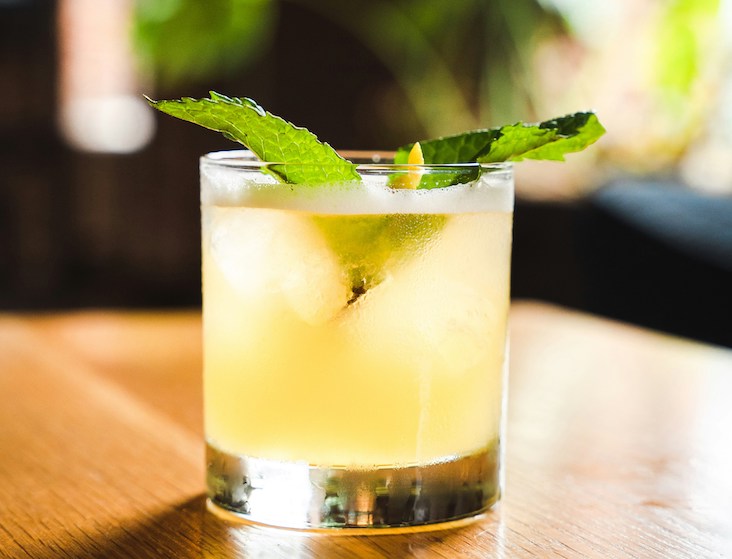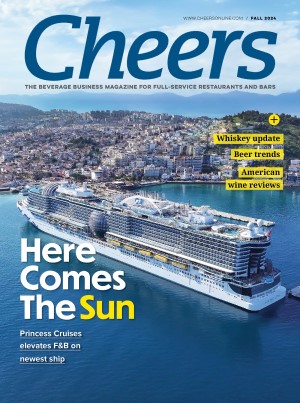Seeking value. Drinking less, but drinking better. Getting more bang for the buck.
While these are over-used phrases that explain consumer behavior since the financial crisis last year, beverage pros nevertheless are finding such expressions useful when describing domestic beer sales.
“Before the recession, customers came in with no budget. Now they enter with a dollar limit in their minds,” says Mike Pasulka, owner of the single location Players Sports Bar in San Diego. “Since they’re limiting themselves, they want to enjoy what they’re having.” Although business is off nearly 20 percent at Players due to a volume decline, “We haven’t seen people move away from more expensive beers.”
“In this economy, we can’t ignore the word ‘value,’” adds Craig Purser, president of the Washington, D.C.-based National Beer Wholesalers Association. “It’s easy to overlook the importance of value and that it means different things to different people.” While trading down might be a value move for guests drinking wine or spirits, he notes, domestic beer is seeing a shift toward super premium and craft offerings.
Domestic super premium and craft beer grew 13.6 percent last year, according to numbers from the 2009 Beer Handbook, recently published by Cheers parent The Beverage Information Group, while premium domestic beer sales were down 4.1 percent and the flavored malt beverage segment was off a noticeable 9.6 percent. Overall, domestic beer grew as a category by 1.4 percent in contrast with a 5.4 percent decline in imported beer. This is good news for domestic, super premium brands such as Yuengling and Samuel Adams.
Rob Lanphier, a partner at B.U.F.F. Brothers Restaurant Group, which operates five sports taverns in the Denver area and one in Arizona, is among those who have seen the shift toward higher-end brews. Lanphier says that his beer sales are split evenly between premium domestic and craft offerings, but last year his spirits sales by dollar went from half of the bar business to 38 percent, with beer picking up the slack. “Women are now drinking beer rather than cocktails,” he notes.
Lite at the End of the Tunnel
Value also can mean light on the wallet, too. Light beer, priced competitively and accounting for more than half of all domestic beer sales, has seen strong sales across the board; Coors Light was up 3 percent, Natural Light gained 1.8 percent, Busch Light and Michelob Ultra were up 4.6 and 0.7 percent, respectively, and Keystone Light exploded with growth of 15.9 percent, according to the Beer Handbook. Only Miller Lite lost volume—due to weak branding compared with rivals Coors and Bud—down 3.4 percent. Then there is the ultra-light Miller offering, MGD 64, which moved 750,000 2.25-gallon cases in its first year.
“Budweiser has been trending down for three years. Miller Genuine Draft is also down, but MGD 64 has replaced it,” says John Lane, a partner and vice president of operations for Winking Lizard Taverns, a 14-unit concept that moves some of the most Miller Lite and Labatt Blue in the state of Ohio. Lane says that over the summer they offered a $4 special on Coors Light and Labatt Blue Light cans that boosted sales during the promotion period by 20 percent.
“Light beer sales continue to do so well,” says Lane, “because so many people are still health-conscious and calorie-conscious.”
“I think our customers are less adventurous than two years ago,” says Kevin O’Laughlin, owner of Charlie’s Pub & Grub in Terre Haute, Ind. and partner in four Buffalo Wild Wings in Indiana. “People come in less frequently, and they’re drinking more domestic beers. They’re not as willing to experiment.” What’s selling well for him are Bud Light and Coors Light, each priced at $2.75 a pint.
Village Pourhouse in New York City also is seeing a growing interest in mainstream domestics, says co-owner Kevin Hooshangi. “In this economy,” says Hooshangi, “we’ve gotten many customers from higher-priced bars and even wine bars. These people are coming for beer, and most of them stick with mainstream beer.” Domestic sales are up 11 percent since last year, he says. The Pourhouse, with one location in the East Village and another on the Upper West Side, menus about 49 draft options and more than 100 bottled beers.
Some of the specials Hooshangi runs include $10 pitchers of Budweiser on Sundays during sports seasons, as well as $2 and sometimes even $1 drafts. “The customers love it,” says Hooshangi, “and these Sunday specials draw huge crowds for us.”
Operators agree that domestic beer sales have been a help during the recent recession. Whether finding value from craft, super premium or light beer, guests are embracing the familiarity and the affordability of domestic beer.
“Everybody has a craving for the beer that got them started,” says Hooshangi. “These beers from the big domestic brewers have become staples of our culture.”
Related story: Profiting from the A-B Merger






